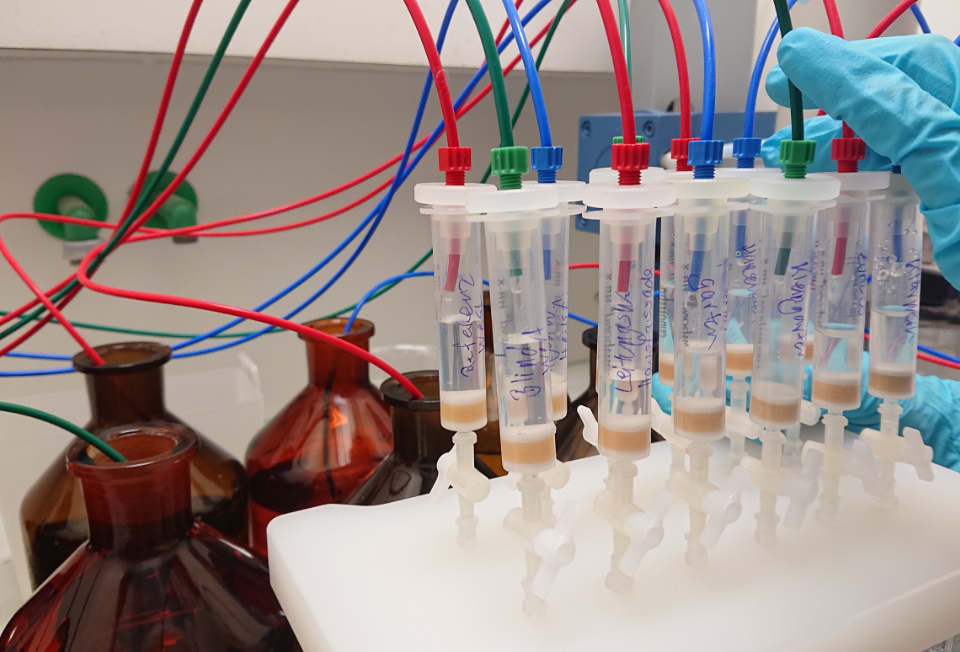Advanced scattering experiments on quantum materials
SOFTWARE
Quanty is a script language which allows the user to program quantum mechanical problems in second quantization and when possible solve these. It can be used in quantum chemistry as post Hartree-Fock or in one of the LDA++ schemes. (self consistent field, configuration interaction, coupled cluster, restricted active space, …) The idea of Quanty is that the user can focus on the model and its physical or chemical meaning. Quanty will take care of the mathematics.
The RIXS program is intended as a general user-friendly program that can be used to simulate core level spectra. The program is not intended to compete with ab-initio multiplet codes that are being developed. References to the recent theory developments can be found in the micron paper.
https://anorg.chem.uu.nl/CTM4XAS/ctm4rixs.html
GSAS-II is a unique and comprehensive open source Python project for determination of crystal structures and diffraction-based materials characterization for crystalline solids on all scales, from perovskites through proteins, using both powder and single-crystal diffraction and with both x-ray and neutron probes. Refinements can combine measurements from laboratory and synchrotron x-rays as well as constant wavelength or time-of-flight neutron sources. It provides structure solution and refinement as well as extensive visualization capabilities.
The FullProf Suite (for Windows, Linux and macOS) is formed by a set of crystallographic programs (FullProf, WinPLOTR, EdPCR, GFourier, etc…) mainly developed for Rietveld analysis (structure profile refinement) of neutron (constant wavelength, time of flight, nuclear and magnetic scattering) or X-ray powder diffraction data collected at constant or variable step in scattering angle 2theta
RMC was built from the original RMCA code of McGreevy & Pusztai to determine the local structure of crystalline materials while still being capable of analyzing disordered systems. It is now possible to fit many data types simultaneously (Neutron & X-ray total scattering & the Bragg profile, EXAFS, single crystal diffuse scattering) and use a range of constraints to produce atomic models that are consistent with all the available data.
Mantid has been created to manipulate and analyse neutron scattering and muon spectroscopy data, but could be applied to many other techniques. The framework is open source and supported on multiple target platforms (Windows, Linux, Mac). It includes and benefits from many other open source projects.
Ansys SpaceClaim’s unique user interface, modeling technology and versatile tool set help you create and modify imported geometry — without the complexity associated with traditional CAD systems. SpaceClaim provides analysts with tools for accelerating geometry preparation for simulation. Whether de-featuring CAD models, extracting fluid domains, or simplifying a model to beam and shell elements, SpaceClaim removes geometry bottlenecks freeing analysts to focus on their simulations.
Over the past years the General Particle Tracer (GPT) package has become a well established simulation tool for the design of accelerators and beam lines. GPT is based on full 3D particle tracking techniques, providing a solid basis for the study of 3D and non-linear effects of charged particles dynamics in electromagnetic fields. All built-in beam line components and external 2D/3D field-maps can be arbitrarily positioned and oriented to simulate a complicated setup-up and study the effects of misalignments.

X-Rays
When certain metals are cooled to low temperatures, the electrons within form pairs that condense into a single quantum state. This superconducting phase exhibits a number of striking features, including electrical conduction without resistance and the expulsion of magnetic fields.
Recently, a new class of superconductors has been predicted to exist with unique pairing symmetries. Astoundingly, these “topological” superconductors can potentially be harnessed to build a quantum computer that is immune to environmental noise. Towards this goal, our group is interested in discovering, characterizing, and engineering new unconventional superconductors.
Neutrons
When certain metals are cooled to low temperatures, the electrons within form pairs that condense into a single quantum state. This superconducting phase exhibits a number of striking features, including electrical conduction without resistance and the expulsion of magnetic fields.
Recently, a new class of superconductors has been predicted to exist with unique pairing symmetries. Astoundingly, these “topological” superconductors can potentially be harnessed to build a quantum computer that is immune to environmental noise. Towards this goal, our group is interested in discovering, characterizing, and engineering new unconventional superconductors.


Electrons
When certain metals are cooled to low temperatures, the electrons within form pairs that condense into a single quantum state. This superconducting phase exhibits a number of striking features, including electrical conduction without resistance and the expulsion of magnetic fields.
Recently, a new class of superconductors has been predicted to exist with unique pairing symmetries. Astoundingly, these “topological” superconductors can potentially be harnessed to build a quantum computer that is immune to environmental noise. Towards this goal, our group is interested in discovering, characterizing, and engineering new unconventional superconductors.
Electron Scattering:
Ultrafast Pump Probe Experiments
When certain metals are cooled to low temperatures, the electrons within form pairs that condense into a single quantum state. This superconducting phase exhibits a number of striking features, including electrical conduction without resistance and the expulsion of magnetic fields.
Recently, a new class of superconductors has been predicted to exist with unique pairing symmetries. Astoundingly, these “topological” superconductors can potentially be harnessed to build a quantum computer that is immune to environmental noise. Towards this goal, our group is interested in discovering, characterizing, and engineering new unconventional superconductors.
